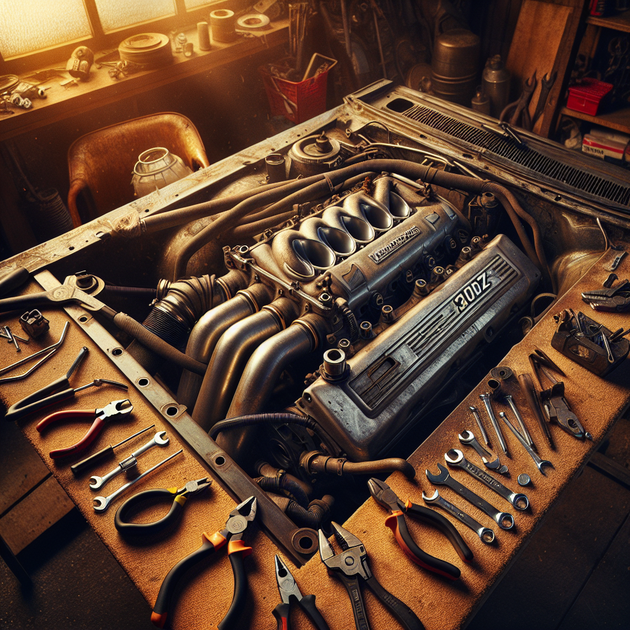Ever pulled apart your car’s engine and found something you totally weren’t expecting? That’s exactly what happened to one owner of a 1985 Nissan 300ZX. Right before pulling off the plenum, he discovered a weird insert shoved inside his intake tube. After yanking it out and straightening it, the big question came up: “Can I just leave this out, or does it actually matter?”
Let’s clear up the mystery behind this sneaky component, and find out if your engine’s better off without it.
What’s Hiding in Your Intake Tube?
The intake tube is a key part of your engine’s air delivery system. It routes fresh air from outside the car to the engine’s intake manifold. On classic cars like the Nissan 300ZX, it’s not unusual to stumble on unexpected hardware—sometimes it’s a factory piece, other times it’s something left behind by a previous owner.
So what’s this odd insert you might find inside? In most cases, it’s a metal or plastic “airflow straightener” or restrictor. Some automakers put these in to smooth incoming air, cut down on noise, or even help with emissions. But to most home mechanics, it looks like an unnecessary bottleneck.
What Does This Insert Actually Do?
Let’s break down the possible reasons for this part showing up in your intake tube:
- Airflow Straightening: Some inserts are designed to reduce turbulence and make airflow smoother before it hits the mass airflow sensor or throttle body.
- Noise Reduction: Certain shapes and materials dampen intake noise, making your engine sound quieter inside the cabin.
- Emissions Compliance: Back in the ’80s, automakers had to meet strict emissions standards. Sometimes, these inserts helped pass those tests by slightly restricting airflow and smoothing out idle quality.
- Factory Restriction: Not every part is there for performance. Sometimes it was just an easy way for manufacturers to limit horsepower or fit different regulations around the world.
If you check out reliable automotive resources like Hagerty, you’ll see that airflow straighteners and restrictors have been debated among car enthusiasts for years.
Should You Leave It Out for More Power?
This is what everyone wants to know: If you take the insert out of your intake tube, will your engine breathe better?
In most cases, removing a small airflow straightener or restrictor will let in a bit more air, which can help with performance—especially if you’re running other mods. But there are a few things to keep in mind:
- If it’s near a mass airflow sensor, pulling it out might mess with how the sensor reads incoming air, which could hurt drivability.
- If your engine starts running rough after removal, you might need to put it back or tune your setup.
- Some inserts only exist to reduce noise, so you might notice a slightly louder intake sound but no real performance change.
Most classic Z-car owners agree that unless your car is bone-stock and you’re worried about absolutely perfect emissions compliance, you can safely leave the insert out. Just make sure nothing else gets sucked into the intake after you remove it!
A Personal Tale from the Garage
A buddy once picked up an ’80s Nissan and found what looked like a crumpled piece of metal in the intake tube. After some head-scratching and a quick search through factory service manuals (and some help from classic car forums), he realized it was a restrictor that didn’t really do much except slow down airflow. Out it came—and while the butt-dyno difference was subtle, he swore the engine sounded throatier and revved a bit smoother. Best of all, no check engine lights, no weird noises, just a cleaner intake path.
What Should You Do Next?
If you’re restoring or tuning an older Nissan like the 300ZX and you find a mysterious insert in your intake tube, you’re not alone. Most of these parts were installed for reasons that don’t matter much anymore—especially if you’re not worried about strict emissions or keeping everything factory-original.
Here’s a quick recap on what to do:
- Check if the insert is loose or damaged—if so, it’s safe to remove.
- If you’re aiming for maximum originality, keep it (or store it safely).
- After removal, monitor for any changes in idle or check engine lights.
Want more details on classic car maintenance? Check out trusted sources like Hagerty’s guide to classic cars.
So—found something odd in your intake tube lately? What did you do with it? Share your story or questions below!

Leave a Reply